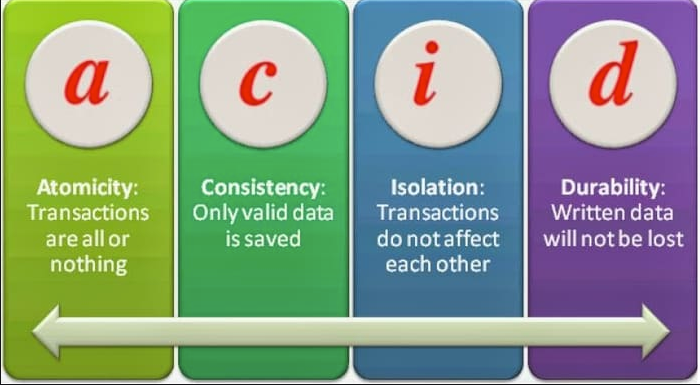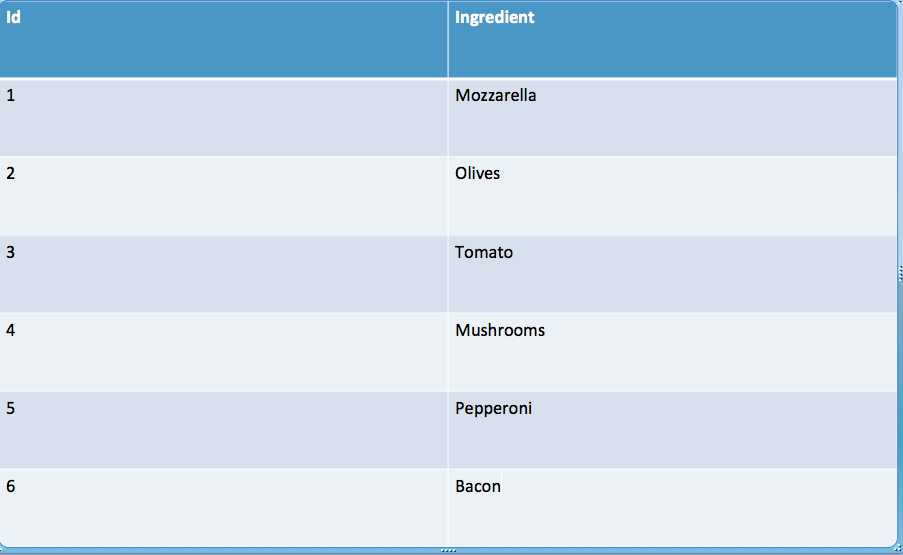Everything you need to know about SQLAlchemy
What is SQL Alchemy?
SQLAlchemy is an Object-Relational Mapper/Mapping-tool, or ORM, a library that developers use to create databases and manipulate their data without needing to know/use SQL.
There are other alternatives in Python like Peewee, and other languages have their own ORMs, such as PHP Eloquent or Java Hibernate.
Why use an ORM?
ORMs have gained popularity because dealing with SQL directly requires significant effort in most cases. The goal of an ORM is to simplify data maintenance. This is done by creating objects to handle database interactions.
Basically, with an ORM you won't need to write SQL again (95% of the time) and can work with objects.
For example:
To insert a user with SQL you have to write:
1INSERT INTO user (name, last_name) VALUES ('Bob', 'Ross');
With an ORM, your code remains familiar like this:
1user = User() 2user.name = "Bob" 3user.last_name = "Ross" 4 5# Add the user to the database 6db.session.add(user) 7 8# Similar to Git commit, this function saves all changes you've made 9db.session.commit()
Just use the db.session.commit() function, and everything you've done with your code will be translated into SQL code.
Let's review the most common database operations
Importing and initializing the application
To use SQLAlchemy, we need to install the Python flask library. Once done, we'll establish a database connection and define the db object, which is essential to start working with it. The documentation shows two implementation methods: traditional (legacy projects) and modern (recommended).
1from flask import Flask 2from sqlalchemy.orm import Mapped, mapped_column # Only needed in modern method 3from flask_sqlalchemy import SQLAlchemy 4 5app = Flask(__name__) 6app.config["SQLALCHEMY_DATABASE_URI"] = "sqlite:////tmp/test.db" 7db = SQLAlchemy(app)
Creating our database
The first step would be defining our model.
- Traditional Method
1class Person(db.Model): 2 # Here we define the table name "Person" 3 __tablename__ = "person" # Optional since it uses the class name by default. 4 5 # Note that each column is also a normal Python instance attribute 6 id = db.Column(db.Integer, primary_key=True) 7 name = db.Column(db.String(250), nullable=False) 8 9 # The serialize method converts the object to a dictionary 10 def serialize(self): 11 return { 12 "id": self.id, 13 "name": self.name, 14 }
- Modern Method
1class Person(Base): 2 # Here we define the table name "Person" 3 __tablename__ = "person" # Optional since it uses the class name by default. 4 5 # Note that each column is also a normal Python instance attribute 6 id: Mapped[int] = mapped_column(primary_key=True, autoincrement=True) 7 name: Mapped[str] = mapped_column(unique=False, nullable=False) 8 9 # The serialize method converts the object to a dictionary 10 def serialize(self): 11 return { 12 "id": self.id, 13 "name": self.name 14 }
INSERT: Inserting a record into the database
To insert a record into the database, you first need the instance you want to add. Then add it to the database session and complete the action with a commit. The following code shows this functionality (replace <username_value> and <email_value> with actual values you want to add):
1person = Person(username = <username_value>, email = <email_value>) 2db.session.add(person) 3db.session.commit()
SELECT: Searching or retrieving records from the database
There are 3 ways to get information from the database:
- Get all records from a particular table/model using
MyModel.query.all() - Get a single record based on its primary key using
MyModel.query.get(id) - Get a group of records based on a query
Person.query.filter_by(arg1=value, arg2=value, ...)
1# Get all records from a particular table/model, in this case, Person 2all_people = Person.query.all() 3all_people = list(map(lambda x: x.serialize(), all_people)) 4 5# Get a single record based on its primary key, which in this case is the person's "id" (only works with primary keys) 6person = Person.query.get(3) 7 8# Get a group of records based on a query, in this case, the string "alex" in the "name" column 9all_people = Person.query.filter_by(name = "alex") 10all_people = list(map(lambda x: x.serialize(), all_people))
Starting with SQLAlchemy 2.x, these queries are done with execute
1from sqlalchemy import select 2 3# Get all records 4all_people = db.session.execute(select(Person)).scalars().all() 5 6# Get a record by ID 7person = db.session.get(Person, 3) # Recommended direct method 8# Alternative with execute: 9person = db.session.execute(select(Person).where(Person.id == 3)).scalar_one_or_none() 10 11# Filter records 12people = db.session.execute( 13 select(Person).where(Person.name == "alex") 14).scalars().all() 15 16# Advanced filters 17from sqlalchemy import or_ 18people = db.session.execute( 19 select(Person).where(or_(Person.name == "alex", Person.age > 25)) 20).scalars().all()
Differences Between query and db.session.execute() Methods
Comparison Table of Common Operations
| Operation | Traditional Method (query) | Modern Method (db.session.execute()) |
|---|---|---|
| All records | Model.query.all() | db.session.execute(select(Model)).scalars().all() |
| Get by ID | Model.query.get(id) | db.session.get(Model, id)or db.session.execute(select(Model).where(Model.id == id)).scalar_one() |
| Simple filters | Model.query.filter_by(name="x") | db.session.execute(select(Model).where(Model.name == "x")) |
| Complex filters | Model.query.filter(or_(...)) | db.session.execute(select(Model).where(or_(...))) |
| First result | Model.query.first() | db.session.execute(select(Model).limit(1)).scalar_one() |
| Sorting | Model.query.order_by(Model.name.desc()) | db.session.execute(select(Model).order_by(Model.name.desc())) |
| Pagination | Model.query.paginate(page=1, per_page=10) | db.session.execute(select(Model).offset(0).limit(10)) |
ℹ️ Note: While
querystill works, migrating to the new style is recommended for future compatibility.
DELETE: Deleting a record from the database
To delete a record from the database, you must first select the instance you want to delete (through its primary key, the id) and delete it using db.session.delete(person), as shown in the following example:
- Traditional method
1person = Person.query.get(3) 2db.session.delete(person) 3db.session.commit()
- Modern method
1person = db.session.get(Person, 3) 2db.session.delete(person) 3db.session.commit()
UPDATE: Updating a record
To modify a record, you must first select it from the database, then you can work with it by changing its properties and commit again, as shown in the following example:
- Traditional method
1person = Person.query.get(3) 2person.name = "Bob" 3db.session.commit()
- Modern method
1person = db.session.get(Person, 3) 2person.name = "Bob" 3db.session.commit()
Transactions
A transaction is a sequence of operations (like INSERT, UPDATE, SELECT) performed on your database. For a transaction to be complete, all operations must be successful. If one operation fails, the entire transaction fails.
All transactions must ensure 4 main properties (known as ACID properties): Atomicity, Consistency, Isolation, and Durability.

A transaction ends with COMMIT or ROLLBACK.
COMMIT: session.commit()
The COMMIT command is used to permanently save the changes made in a transaction to the database.
When you use INSERT, UPDATE, or DELETE, the changes made with these commands are not permanent; the changes can be undone, or in other words, we can go back.
However, when you use the COMMIT command, the changes to your database will be permanent.
ROLLBACK: session.rollback()
The ROLLBACK command restores your database to your last COMMIT. You can also use it with the SAVEPOINT command to jump to a point you saved during an ongoing transaction.
Similarly, if you use UPDATE to make changes to your database, you can undo them using the ROLLBACK command, but only if you haven't used the COMMIT command yet:
1db.session.rollback()
SAVEPOINT: session.begin_nested()
The SAVEPOINT command is used to temporarily save a transaction so you can return to a certain point using the ROLLBACK command if needed. You can use it like this:
1db.session.begin_nested()
This command can be called multiple times, and with each call, a checkpoint called checkpoint is established with a unique identifier.

For example, let's say we want to prepare a pizza and create a database to enter its ingredients. The base of this pizza has three ingredients: mozzarella, tomato, and olives. Our table will be called 'Pizza' and, after inserting the ingredients, it would look like this:

Additionally, we have a list of extra ingredients we can add: we first choose meat, but then change our minds and want to replace it with mushrooms. We'll also add pepperoni and bacon. Here's how this transaction would be done:
1# Let's assume we already added the base ingredients beforehand 2 3# Now we insert a new ingredient to the pizza, meat 4ingredient = Ingredient() 5ingredient.name = "meat" 6ingredient.id = 4 7db.session.add(ingredient) 8 9# Now we COMMIT and save it to the database, thus setting the ingredient in the Pizza 10db.session.commit() 11 12# We replace the fourth ingredient, which was previously meat, with mushrooms 13ingredient = Ingredient.query.get(4) 14ingredient.name = "mushrooms" 15db.session.commit() 16 17# Save a "checkpoint" 18checkpoint_a = db.session.begin_nested() 19 20# Add pepperoni to the pizza 21ingredient = Ingredient() 22ingredient.name = "pepperoni" 23db.session.add(ingredient) 24db.session.commit() 25 26# One last "checkpoint" before adding bacon 27checkpoint_b = db.session.begin_nested() 28 29# Insert bacon 30ingredient = Ingredient() 31ingredient.name = "bacon" 32db.session.add(ingredient)
Now our 'Pizza' has the following ingredients:

However, before putting it in the oven, we decided we didn't want bacon, so we used rollback:
1checkpoint_b.rollback() 2# Goes back to checkpoint B, not including bacon
Finally, our 'Pizza' looks like this:

...I got hungry after reading this lesson! Didn't you?
Relationships in SQLAlchemy:
Relationships allow connecting models/tables to each other, reflecting how data interacts in your database. SQLAlchemy offers 3 main types of relationships, each with its traditional (v1.x) and modern (v2.x+) syntax.
1. One-to-Many Relationship
When should I use it?
When a record in Table A can have multiple associated records in Table B.
- Traditional Method (query)
1class User(db.Model): 2 id = db.Column(db.Integer, primary_key=True) 3 posts = db.relationship('Post', backref='author') 4 5class Post(db.Model): 6 id = db.Column(db.Integer, primary_key=True) 7 user_id = db.Column(db.Integer, db.ForeignKey('user.id'))
- Modern Method (SQLAlchemy 2.x)
1class User(db.Model): 2 id: Mapped[int] = mapped_column(primary_key=True) 3 posts: Mapped[List["Post"]] = relationship(back_populates="author") 4 5class Post(db.Model): 6 id: Mapped[int] = mapped_column(primary_key=True) 7 user_id: Mapped[int] = mapped_column(ForeignKey("user.id")) 8 author: Mapped["User"] = relationship(back_populates="posts")
2. Many-to-Many Relationship
- Traditional Method
1tags = db.Table('tags', 2 db.Column('post_id', db.Integer, db.ForeignKey('post.id')), 3 db.Column('tag_id', db.Integer, db.ForeignKey('tag.id')) 4) 5 6class Post(db.Model): 7 id = db.Column(db.Integer, primary_key=True) 8 tags = db.relationship('Tag', secondary=tags, backref=db.backref('posts', lazy='dynamic')) 9 10class Tag(db.Model): 11 id = db.Column(db.Integer, primary_key=True)
- Modern Method
1class Post(db.Model): 2 id: Mapped[int] = mapped_column(primary_key=True) 3 tags: Mapped[List["Tag"]] = relationship(secondary="post_tag", back_populates="posts") 4 5class Tag(db.Model): 6 id: Mapped[int] = mapped_column(primary_key=True) 7 posts: Mapped[List["Post"]] = relationship(secondary="post_tag", back_populates="tags") 8 9post_tag = Table( 10 "post_tag", 11 db.metadata, 12 Column("post_id", ForeignKey("post.id")), 13 Column("tag_id", ForeignKey("tag.id")) 14)
When to use it?
When you need complex relationships where both tables can have multiple records linked to each other.
3. One-to-One Relationship
- Traditional Method
1class User(db.Model): 2 id = db.Column(db.Integer, primary_key=True) 3 profile = db.relationship('Profile', uselist=False, backref='user') 4 5class Profile(db.Model): 6 id = db.Column(db.Integer, primary_key=True) 7 user_id = db.Column(db.Integer, db.ForeignKey('user.id'))
- Modern Method
1class User(db.Model): 2 id: Mapped[int] = mapped_column(primary_key=True) 3 profile: Mapped["Profile"] = relationship(back_populates="user") 4 5class Profile(db.Model): 6 id: Mapped[int] = mapped_column(primary_key=True) 7 user_id: Mapped[int] = mapped_column(ForeignKey("user.id")) 8 user: Mapped["User"] = relationship(back_populates="profile")
When to use it?
When a record in Table A must be linked to exactly one record in Table B.
Comparison Table
| Relationship | Traditional Method | Modern Method | Advantages of Modern Method |
|---|---|---|---|
| One-to-Many | relationship('Post', backref='author') | Mapped[List["Post"]] = relationship(back_populates="author") | Explicit typing, better IDE support |
| Many-to-Many | Separate secondary table, lazy-loaded backref | Table as object, bidirectional back_populates | Greater clarity, precise type control |
| One-to-One | uselist=False in relationship | Mapped["Profile"] without list | More intuitive syntax, better documentation |
| Configuration | Implicit in backref | Explicit with back_populates | Clearer and more maintainable relationships |
| Typing | No native support | Typing with Mapped[T] | Better static analysis, autocompletion |
💡 Tip: The modern method is compatible with Flask-SQLAlchemy 3.x and offers better performance and long-term maintainability.
With SQLAlchemy, you can connect your models like LEGO pieces (but without the pain of stepping on one barefoot 😆). Whether it's 1:1 (like a phone and its owner), 1:N (like a meme and its thousands of shares), or N:M (like your favorite shows and your sleepless nights), the ORM has you covered!
Now go write queries as if the code documented itself! 🦸♂️💻
(And remember: if your code works on the first try, it's time to be suspicious... or celebrate with coffee ☕).
Ready for the next level? SQLAlchemy awaits! 😉